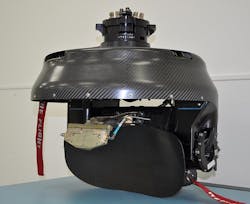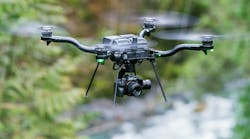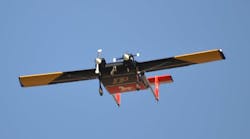Officials of the Air Force Life Cycle Management Center at Wright-Patterson Air Force Base, Ohio, are ordering 72 MQ-9 Block 20A Lynx SAR retrofit kits for the MQ-9 Reaper hunter-killer drone. General Atomics make the Reaper UAV as well as the Lynx radar.
The General Atomics Lynx multi-mode radar provides high-resolution, photographic-quality radar imagery through clouds, rain, dust, smoke, and fog. The radar consumes minimal Size, Weight, and Power (SWAP) while delivering precision air-to-surface targeting accuracy and superb wide-area search capabilities, General Atomics officials say.
Lynx features synthetic aperture radar (SAR), ground/dismount moving target indicator (GMTI/DMTI), and maritime wide area search (MWAS) modes. Lynx's search modes provide the wide-area coverage and allow for cross-cue to a narrow field-of-view (FOV) electro-optical/infrared (EO/IR) sensor.
Lynx includes two spotlight and two stripmap SAR modes. Spotlight mode produces high-resolution imagery on a defined point. Stripmap mode mosaics several spot SAR images together to form one large image.
Using SAR imagery, subtle changes in the scene are detected by overlaying two images taken at different times. Coherent change detection (CCD), amplitude change detection (ACD), and automated man made object detection (AMMOD) algorithms rapidly highlight the differences between the first and second SAR image for analysis.
The GMTI mode helps locate moving vehicles, while DMTI enables operators to detect very slow moving vehicles and people on foot. In addition, operators can select a GMTI/DMTI target and automatically cross-cue to the EO/IR sensor in narrow FOV for visual identification of the target.
Lynx's MWAS mode detects ship and boat traffic in various sea state conditions; it also integrates automated identification system (AIS) information for target correlation and identification. MWAS is suitable for coastal surveillance, drug interdiction, long-range surveillance, small target detection, and search and rescue operations.
On this contract General Atomics will build the UAV radar systems in Poway, Calif., and should be finished by May 2017. For more information contact General Atomics Aeronautical Systems online at www.ga-asi.com, or the Air Force Life Cycle Management Center at www.wpafb.af.mil/aflcmc.



